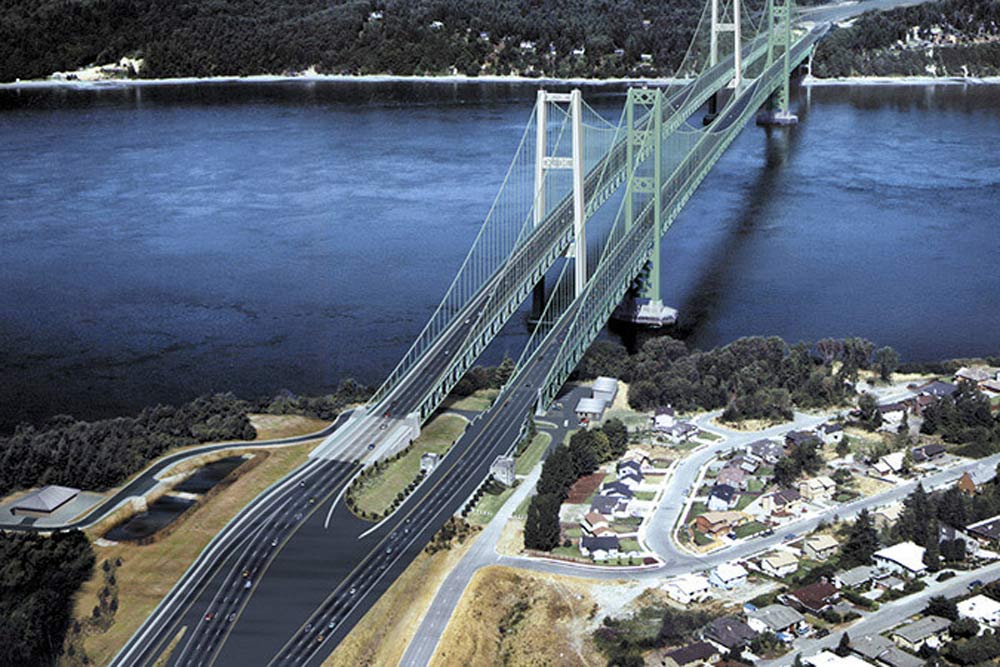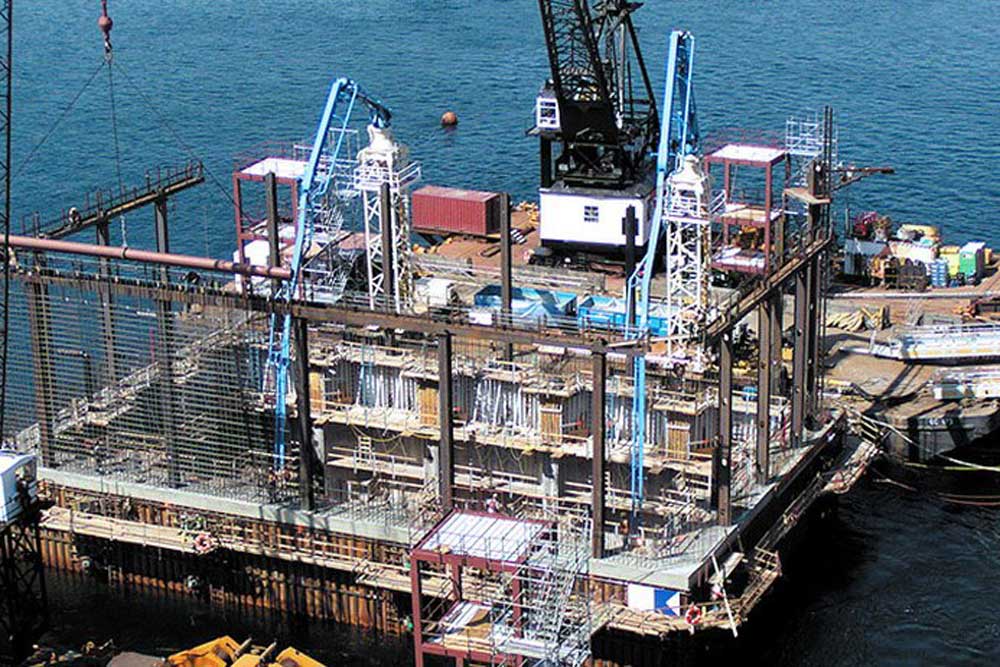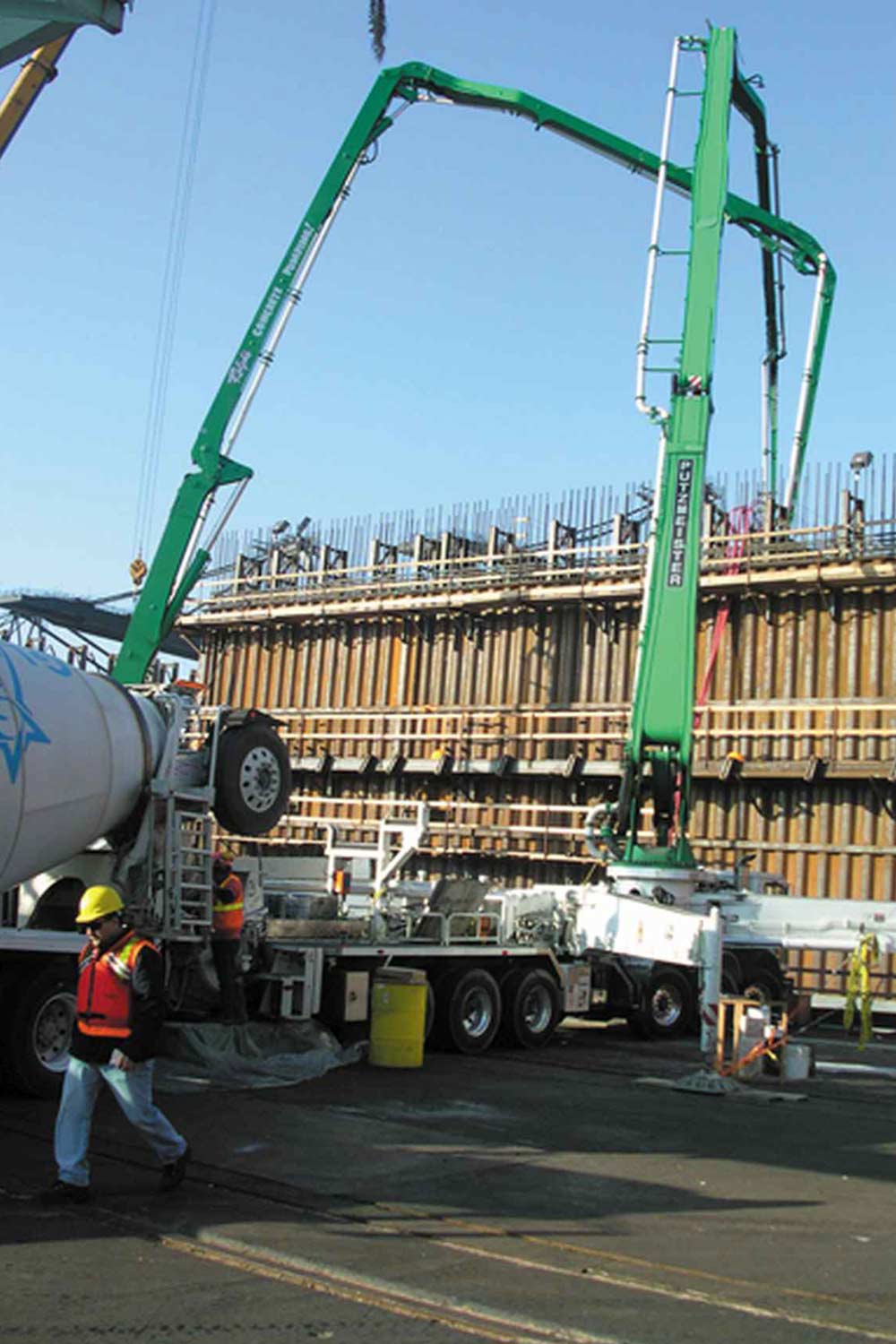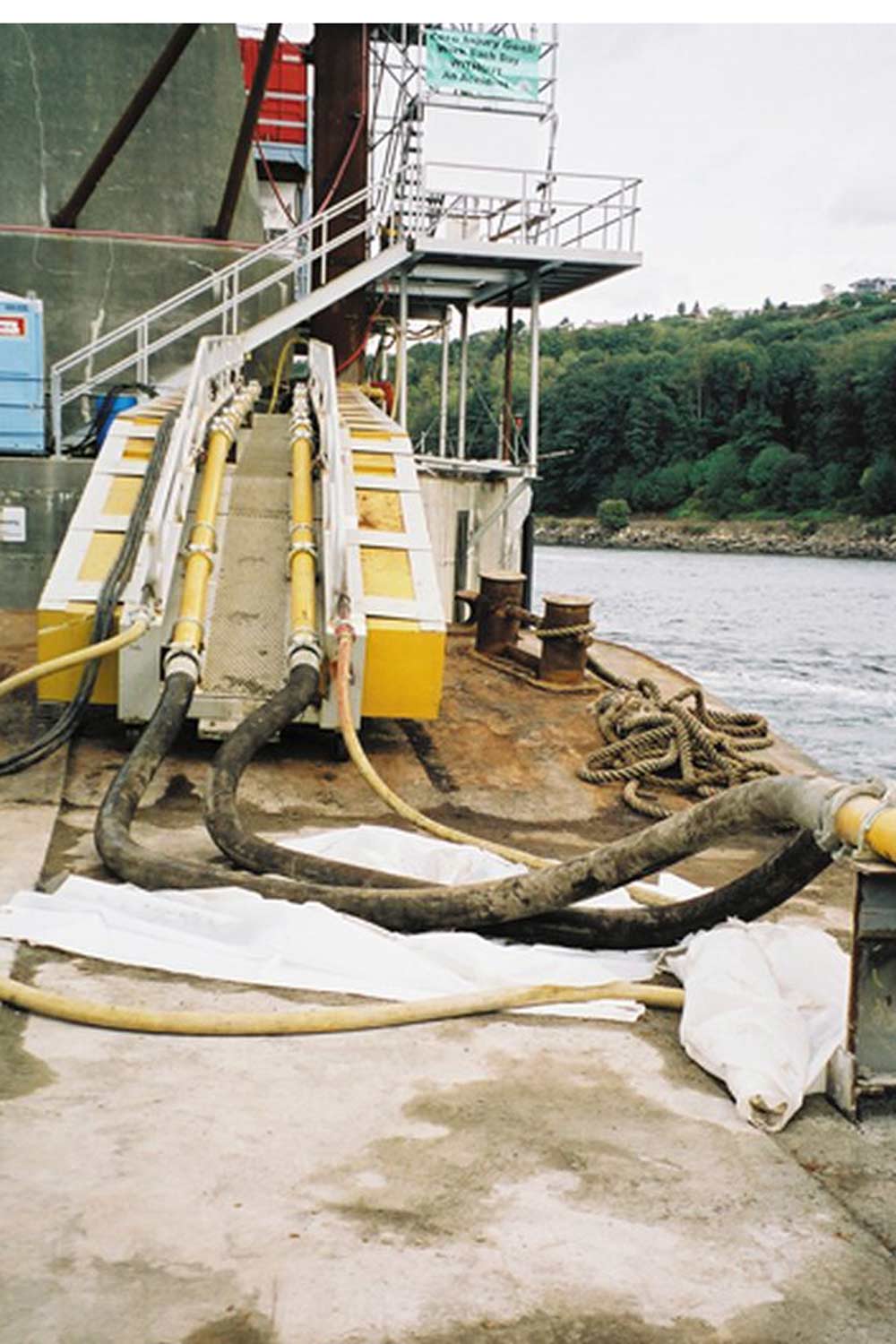Tacoma Narrows Bridge, Seattle, Washington, USA
Feb 24, 20
Tacoma Narrows Bridge, Seattle, Washington, USA
Strong Currents, Tidal Swings, Earthquake – The New Bridge Presented Double Barrel of Challenges
Bridging gaps is never easy, especially when you take on the mammoth task of building one of the largest suspension bridges in the US.
Building a bridge over the mile wide channel of Puget Sound had become of paramount importance, as it was becoming difficult for the present structure to sustain the voluminous surge in traffic. Intended initially for 60,000 vehicles in a day, the Tacoma Narrows Bridge was now a pathway to more than 90,000 vehicles per day. The need of the hour was a newer, stronger and bigger bridge connecting Washington Mainland and the Olympic Peninsula.
The Challenge
- It is a known fact that the south of Seattle is a seismically active area. The high winds, 13 ft. (4 m) tidal swings and the seven knot currents add to the challenges, making it difficult to undertake construction.
- While construction of the bridge was of paramount importance, equally important were the environmental concerns regarding concrete spillage in the water.

The completed Tacoma Narrows Bridge in Seattle
The Solution
The location south of Seattle, Washington, presents significant challenges, as the Tacoma Narrows is located in a seismically active area complicated by high winds, 15 ft. (4 m) tidal swings, and seven-knot currents.
The first cable-suspended bridge was built there prior to WW II. However, it was a failure, nicknamed “Galloping Gertie” for the way it swayed in the wind. The bridge collapsed about four months after it opened in 1940.
As a result, its replacement was a more aerodynamically sound steel bridge, and today it is the fifth largest suspension bridge in the United States. However since the bridge’s opening in 1950, traffic volume has soared to over 90,000 vehicles a day – 30,000 more than the maximum for which it was intended. Therefore, it became paramount to construct another bridge to reduce traffic congestion.
The new 2007 Tacoma Narrows Bridge is 5,400 ft. (1645 m) in total length, 2,800 ft. (853 m) in the main span. Being constructed directly parallel to the current Narrows Bridge, it provides today three eastbound traffic lanes, shoulders on both sides, and a separate bicycle/pedestrian path. Meanwhile, the current bridge has been reconfigured to carry three westbound traffic lanes.
Although the center lanes of the two bridges is only 200 ft. (60 m) apart, the two structures don’t look alike. The existing bridge towers are green and made of steel.
The new bridge towers has a coated gray with pigmented sealer and built of reinforced concrete. That’s because today’s technology makes concrete much more practical than steel as a more cost-effective medium and with significantly lower maintenance.
After concluding the design, the first major task was to construct two of the largest caissons ever built, forming the foundation for the 510 ft. (155 m) tall piers.
Each caisson – equivalent to a 20-story underwater building– contains 38,000 cubic yards (29,000 m³) of concrete and can accommodate the weight of a second deck (either road or light rail) in the future.
Proposals of how to efficiently concrete the caissons were presented to the firm of Tacoma Narrows Constructors, a joint venture of Bechtel and Kiewit Pacific.
The product specialists of Putzmeister America and Putzmeister in Germany masterminded a strategic plan for the project.
First, the technical plan allowed for pumping concrete from land versus hauling concrete on a barge. Therefore, ready mix trucks could conveniently discharge directly into a concrete pump's hopper from shore.
Concrete would travel via a five-inch delivery line along the current bridge until it was necessary to cross down 165 ft. (50 m) and over to a pumping barge.
At that point, a ramp would hold the delivery system, which had two five-inch steel braided Putzmeister hoses to accommodate the tide.
Second, the use of Putzmeister’s advanced ZX pipeline alleviated environmental concerns about concrete spillage in the water. ZX delivery line and couplings are leak-proof and rated for extremely high pressures.
Bill Carbeau, Telebelt® and specialty Products Sector Manager for Putzmeister America, said, “The ZX pipeline and couplings were originally designed by Putzmeister for use in sewage treatment plants where it’s critical to prevent leaks. However, the technology was successfully applied in this application, and it proved to be absolutely leak free and trouble free.”
A third factor in selecting the plan was the pumping equipment’s design. The proposed Putzmeister BSA 14000 HP E concrete trailer pumps were the only units to offer both the high volume and high pressure combination needed for pumping concrete on the job. The units have electric twin motor drives and were capable of outputs up to 130 cubic yards (99m3/hr). Their maximum pressure is 3,190-psi (220 bar).
Finally, no counterweight on the placing booms was required, even with the larger sized models selected for extended reach. The lack of counterweight was a significant factor to keep the center of gravity as low as possible on the barge.
Therefore, with a 125 ft. (38 m) horizontal reach, the Putzmeister MXG 38-4 placing booms were selected. They were deemed both long enough for efficient concrete placement and high enough to clear the rebar above the pour.
Caisson Construction
Once the Putzmeister strategy was selected, developing the two needed caissons was a “go.” At the nearby Port of Tacoma site, 62 ft. (19 m) high steel forms were built atop a cutting edge, which is the base of a caisson. The bottom edges of this structure are tapered so they cut through the seabed as a caisson is lowered into place.
Ultimately the BSA 14000 HP E pumped concrete into its walls, whereby a caisson started. Because of the weight, the structure dropped 30 ft. (9 m) beneath the water’s surface as planned. Both caissons were initially prepared in this manner.
In July of 2004, three tugboats towed the first caisson to the construction site 11 miles (18 km) away. The theory was for the ingoing tide to bring the caisson in from the port and the outgoing tide to handle the final maneuvering.
Nothing is simple, however, when the present 15,240 ton structure is being towed. At this point in its development stage, the caisson was essentially a seven-story high box, 130 ft. long, 80 ft. wide, 80 ft. tall (40m x 24m x 24m) – and partly submerged.
The days following, the structure was precisely maneuvered into position. With only a small margin of error allowed, divers used GPS to locate and thus help secure the caisson with cables to prepositioned anchors embedded in the Tacoma Narrows floor. Later in August, the second caisson traveled to its final destination and was handled in the same manner.
Over the next few months, the two structures - mostly hollow and each floating on 15 steel air domes - gradually sunk as a series of 10 ft. (3 m) reinforced concrete walls were added atop each caisson. Two MXG 38-4 placing booms were responsible for simultaneously placing the concrete; and each had the ability to cover the other’s area as a backup measure - although this proved unnecessary as no technical problems were encountered. The average output was 60 cubic yards (54 m3) an hour with line pressures as high as 2,000 psi (138 bar).
The bigger placing booms required larger versions of the company’s standard modular design towers. Bill Carbeau noted, “Two freestanding 40 ft. (12 m) towers were bolted to a single floating barge, where it was necessary to flood the chambers to achieve a zero-degree elevation with no more than a plus or minus three-degree list. This was to offset the loads imposed by the two booms, which were mounted next to each other on the same side of the barge.”
From land, concrete was pumped by two BSA 14000 HP E stationary concrete pumps, each using 1,500 ft. (457 m) of ZX delivery line to reach one caisson. Meanwhile, the placing booms placed an average of 1,200 cubic yards (917 m3)fo concrete in a day pour.
Then the barge moved to the caisson on the other side of the Puget Sound to pump the following week. To pump the other caisson, two BSA trailer pumps were now set up on the other side of the bridge using 2,200 (670 m) of delivery line.
Overall, this flip-flopping approach meant the (64 m) tall caissons could be built in a concurrent manner. When completed, the cutting edge was sealed with concrete, and eventually went through about 150 ft. (46 m) of water and 60 ft. (18 m) of seabed to reach solid footing.
The crew never encountered even one minor problem with the high pressure trailer pumps or separate placing booms on the highly technical job.
Pier Construction
Pier construction started in September 2004. Because of the success in pumping the caissons, Putzmeister equipment was also utilized for pumping the piers.
Therefore, before being disassembled, the existing placing boom setup was used to place concrete as high as the units could reach - another 70 ft. (21 m) above the caissons.
The same Putzmeister BSA 14000 stationary concrete pumps were set up underneath both ends of the new bridge, again using a total of 3,700 ft. (1127 m) of ZX pipe to deliver the concrete, but this time to a bucket.
The bucket, in turn, placed the concrete in the tower’s forms, which could only withstand a maximum of 24 cubic yards an hour (18 m³/hr).
As tehy reached the struts, a BSA 14000 stationary concrete pump pumped the concrete all the way to the top of the strut’s 140 ft. (42 m) height, while a tower crane assisted by holding the pipeline.
A system of concrete forms called “bird cages” is being used to build each leg of the hollow towers in 5 m increments. With each caisson and pier nearly as tall as Seattle’s Space Needle, they consumed a total of 16,000 cubic yards (12,232 m³) of concrete .
Of special note is the concrete mix for the piers. It is both strong and dense to keep salt spray and acid rain from penetrating the piers’ steel skeleton, and it incorporates plasticizers and fly ash. Typically, bridge tower specs call for a 7,000 psi (483 bar), however, this mix is closer to 11,000 psi (758 bar).
Cable Anchors
Telebelt conveyors are placing concrete to anchor the cables for suspension. “Truck-mounted Putzmeister belt conveyors are an ideal solution because they can place the larger size aggregate fast and without the possibility of plug-ups,” noted Carbeau. “The two cables consumed 26,000 cubic yards (19,878 m3) of concrete."
The new Tacoma Narrows Bridge opened in 2007. Upgrades to the existing Tacoma Narrows Bridge have been completed in 2008. Overall, the project cost is estimated at $849 million.
The overall project have consumed over 255,000 cubic yards (194,962 m3) of concrete.

Putzmeister equipment was used for the pier construction as well as to anchor cables


Concrete Takeaways
- The Tacoma Narrows Bridge is the fifth longest suspension bridge in the US.
- The original Tacoma Narrows Bridge, also called ‘Galloping Gertie”, collapsed only four months after it opened in 1940.
- The whole project cost approximately $849 million and it had consumed over 255,000 cubic yards (194,962 m³) of concrete.
- The piers have been constructed using a special concrete mix, which is both strong and dense. This keeps the salt spray and acid rain from penetrating the steel skeletons of the piers.
Project Partners
General contractor: Tacoma Narrows Constructors – a joint venture of Bechtel and Kiewit Pacific
Concrete supplier: Glacier Sand and Gravel – Tacoma, WA
Authorized dealer: Northwest Concrete Pumps and Systems, Inc. – Seattle, WA
Pumping contractor: Ralph’s Concrete Pumping – Seattle, WA
Concrete placing equipment for caissons and piers:
2 x MXG 38-4 Stationary placing booms on freestanding 40-ft PM towers
3 x BSA 14000 HP E Stationary concrete pumps
Concrete placing equipment for anchors:
TB 105 and TB 130 Telebelt conveyors
Concrete placing equipment for retaining walls and bridge overpasses:
Putzmeister Concrete boom pumps – various sizes